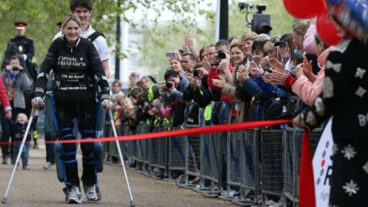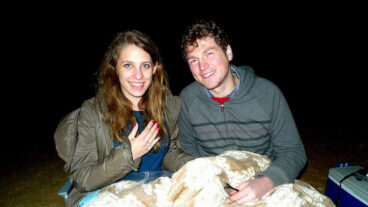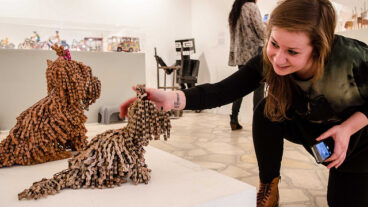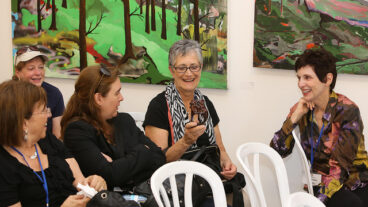GeoSim’s technology creates detailed 3D city maps.GeoSim Systems
Ramat Gan, Israel
VEHICLES that move slowly down the street, pausing regularly to take photographs with remote-controlled cameras, tend to make the police a bit nervous. But one trailer loaded with imaging equipment that made its way through the streets of central Philadelphia wasn’t spying – although at first, Secret Service agents had their doubts.
Both the vehicle and a plane that flew over the same area were taking authorized pictures of each building and its surroundings, at the behest of the downtown improvement district. Now the terabytes of imaging data are being used to build a three-dimensional model of central Philadelphia, down to the last cornice, mailbox and shrub.
The city model can then be integrated with other information, like listings of shops and rental space, so that one day people who’d rather be in Philadelphia will be able to be there virtually, from their computers. Apartment seekers, for example, will be able to click their way through the neighborhood, taking a virtual walk and checking out the view from the windows of apartments that strike their fancy.
Victor Shenkar, the founder and chief executive of the company that offers the program, GeoSim Systems, based in Petah Tikva, a suburb of Tel Aviv, said the simulated city would offer many possibilities, among them matchmaking. “We believe that this virtual city we are building will be a great stage for human introductions,” he said. People who visit a virtual art gallery, for example, might meet others there.
Dr. Shenkar honed his modeling and visualization tools developing a virtual Golan Heights to train Israeli pilots. He is the former head of research and development for the Israeli air force, where he served for 21 years. Now his company is busy mapping three-dimensional urban areas both abroad and in the United States, including not only the business district in Philadelphia, but soon, the campus of the University of Pennsylvania.
Dennis Culhane, a professor at Penn and director of the cartographic modeling lab there, brought the project to the campus. Most of the data collection is already done. “A little trailer towed by a car went up and down the campus sidewalks, and planes flew over the same area,” he said. Snow and ice have temporarily halted the progress of the trailer, but work will resume soon.
Dr. Culhane envisions many applications for the model, among them recruiting students and keeping in touch with alumni. “The university is the perfect place to create this kind of environment,” he said. “There is a community of people who were once part of it and still feel attached to it, as well as potential students who want information.” The model may become the basis for a new interface for the school’s Web site. “Instead of a series of flat pages on the Internet site, people could navigate through the campus,” he said, clicking on buildings, for example, and getting access to Web resources or encountering other people with whom they could chat. “The information would be delivered via Web pages but navigated by this three-dimensional space,” he said.
The software might also be useful in campus planning, he said, including visualizing how buildings would fit into 18 acres of land the university recently acquired. “We can take architectural models of buildings and insert them into the campus model and see what they’d look like in the space,” he said.
Dr. Culhane expects computer games to be another benefit of the system, when students in the University’s new master’s program in gaming technology begin to take advantage of the database.
“The buildings look true to life in the model, and the graphic detail is incredible,” he said, making the virtual campus a good backdrop for a game.
In the central business district of Philadelphia, data collection for the model has been completed. “They’ve flown and driven through every single street,” said Paul Levy, president of the center city business district. Dr. Levy said all had gone smoothly, except for “some hectic moments with the Secret Service” before the purpose of the trailer was clarified.












